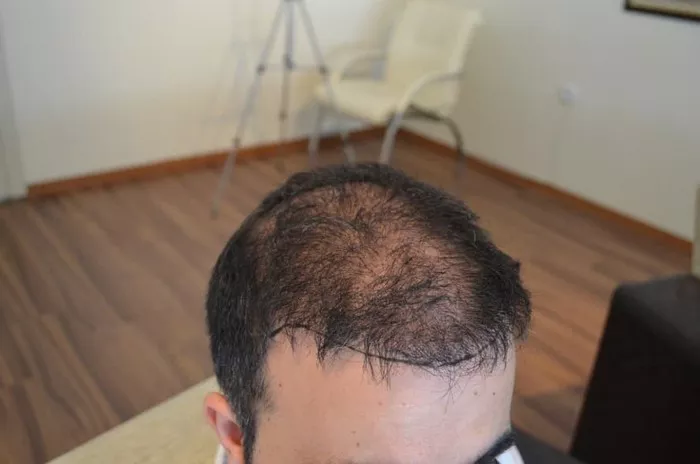Hair transplants have become a popular solution for those experiencing hair loss. While they can provide significant aesthetic benefits and boost confidence, it is essential to recognize that like any medical procedure, hair transplants carry risks. This article will explore the potential risks and complications associated with hair transplants, offering insights for those considering this option for hair restoration.
What Is a Hair Transplant?
1. Overview of Hair Transplants
A hair transplant involves transferring hair follicles from a donor site (often the back of the head) to areas experiencing thinning or baldness. The two primary techniques used in hair transplants are:
FUT (Follicular Unit Transplantation): A strip of scalp is removed, and individual hair follicles are extracted from this strip.
FUE (Follicular Unit Extraction): Individual follicles are harvested directly from the scalp using a specialized tool.
2. The Hair Growth Cycle
Understanding the hair growth cycle is crucial for patients. Hair goes through three primary phases:
Anagen Phase: The growth phase, lasting several years.
Catagen Phase: The transitional phase where growth slows and the hair follicle shrinks.
Telogen Phase: The resting phase where hair falls out, leading to new growth.
Common Risks Associated with Hair Transplants
1. Infection
Infection is one of the most significant risks associated with hair transplants. It can occur at the donor or recipient site and may lead to complications if not addressed promptly. Symptoms of infection can include:
Redness and swelling
Pus or drainage from the surgical site
Increased pain or discomfort
2. Bleeding
Minor bleeding is expected during and after a hair transplant. However, excessive bleeding can be a concern, particularly if:
Patients have bleeding disorders or take anticoagulant medications.
The surgeon encounters unforeseen complications during the procedure.
3. Scarring
Both FUT and FUE techniques can result in scarring:
FUT: This method typically leaves a linear scar at the donor site, which may be visible if hair is cut short.
FUE: While this technique is less likely to result in noticeable scars, small circular scars can still occur where follicles are harvested.
4. Unnatural Appearance
Sometimes, hair transplants can result in an unnatural look, which may be due to:
Poorly placed follicles
Uneven hair density
Incorrect hairline design
Patients must choose a skilled and experienced surgeon to minimize this risk.
5. Shock Loss
Shock loss refers to temporary hair shedding that can occur in both transplanted and surrounding hair. This is often due to trauma from the procedure and can lead to temporary thinning before new hair growth occurs.
6. Numbness and Sensation Changes
Patients may experience temporary or permanent numbness or altered sensation in the scalp following surgery. This can result from nerve damage during the procedure, though it typically resolves over time.
Long-Term Risks and Considerations
1. Hair Growth Variability
Not all transplanted hair follicles will grow at the same rate or density. Factors influencing this variability include:
The quality of the donor hair
Individual healing processes
Hair growth cycle differences
2. Continued Hair Loss
While transplanted hair is typically resistant to genetic hair loss, patients may continue to experience thinning in non-transplanted areas. This can lead to an uneven appearance over time, necessitating further procedures.
3. Need for Follow-Up Procedures
Many patients require additional sessions to achieve their desired results. The need for follow-up procedures can add to the overall cost and time commitment associated with hair restoration.
Choosing the Right Surgeon
1. Importance of Qualifications
Selecting a qualified and experienced hair transplant surgeon is crucial for minimizing risks. Look for:
Board certification in dermatology or plastic surgery
Extensive experience in hair restoration techniques
Positive patient reviews and before-and-after photos
2. Consultation Process
During the consultation, discuss your goals and concerns. A good surgeon will provide:
A thorough examination
An honest assessment of your suitability for the procedure
Detailed information about potential risks and complications
Pre-Operative Considerations
1. Health Assessments
Before undergoing a hair transplant, patients should undergo a health assessment to identify any underlying medical conditions that may increase surgical risks.
2. Medication Management
Discuss all medications and supplements you are taking with your surgeon. Some medications, particularly blood thinners, may need to be adjusted or stopped before the procedure to reduce the risk of bleeding.
3. Lifestyle Modifications
Patients may be advised to avoid smoking and alcohol consumption prior to surgery, as these habits can impair healing and increase complication risks.
Post-Operative Care and Recovery
1. Immediate Aftercare
Post-operative care is crucial for reducing the risk of complications. Key aftercare tips include:
Avoiding touching or scratching the scalp
Keeping the surgical area clean
Following prescribed medications, such as antibiotics and pain relievers
2. Long-Term Care
Long-term care strategies can help maintain results and minimize risks:
Using gentle hair care products
Avoiding harsh treatments or styles that could stress hair follicles
Scheduling regular follow-up appointments with your surgeon
Conclusion
While hair transplants can be an effective solution for hair loss, they come with various risks that potential patients must understand. By being aware of the possible complications and selecting a qualified surgeon, individuals can make informed decisions about their hair restoration journey. Careful planning, realistic expectations, and diligent post-operative care are essential for achieving successful and satisfying results. Ultimately, a well-informed patient is better equipped to navigate the complexities of hair transplants and enjoy the benefits of a fuller head of hair.
Related topics:
- Do Hair Transplants Look Natural? Understanding the Truth
- Do Hair Transplants Go Grey? Understanding the Facts
- Growing Long Hair After a Hair Transplant: What to Expect


